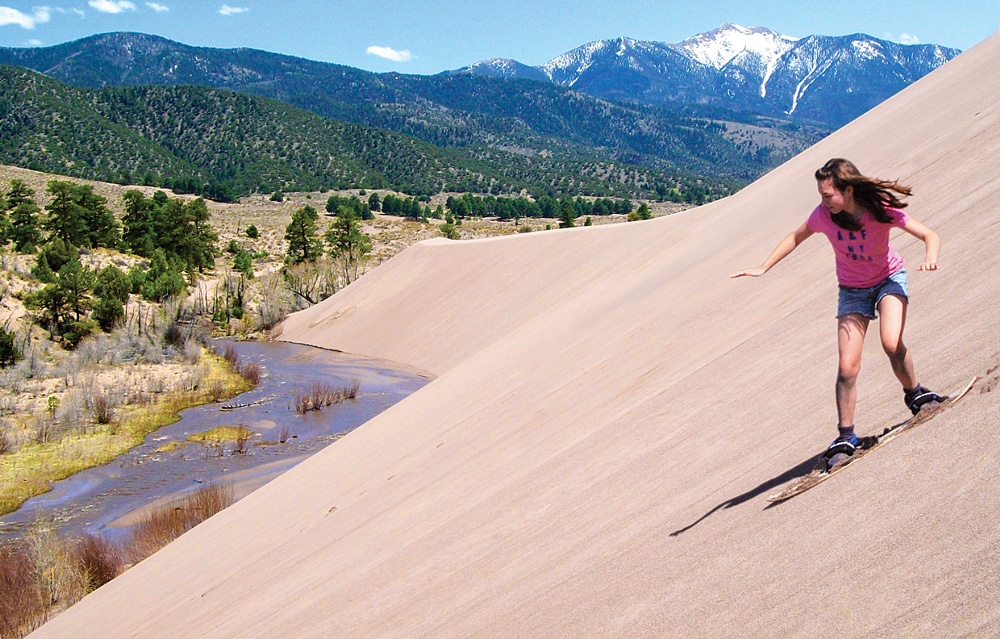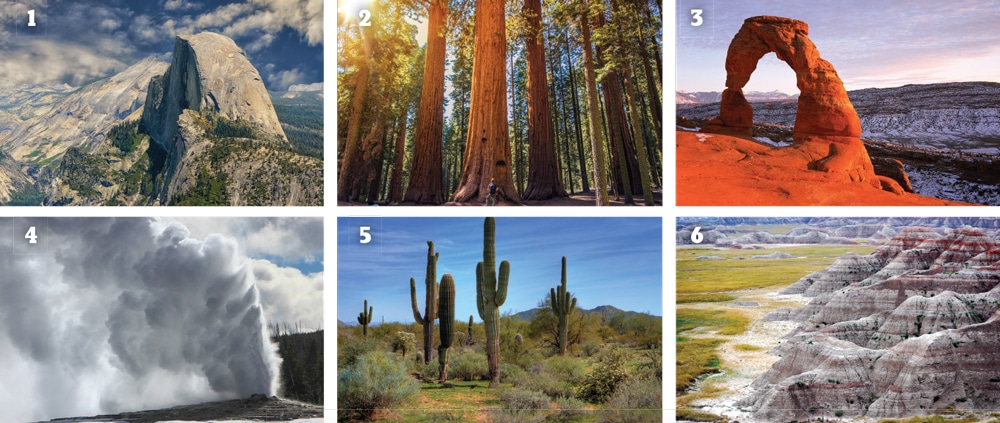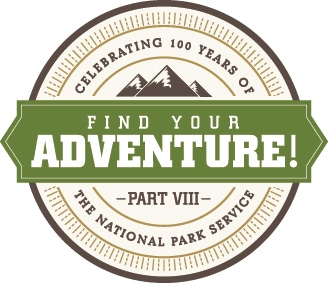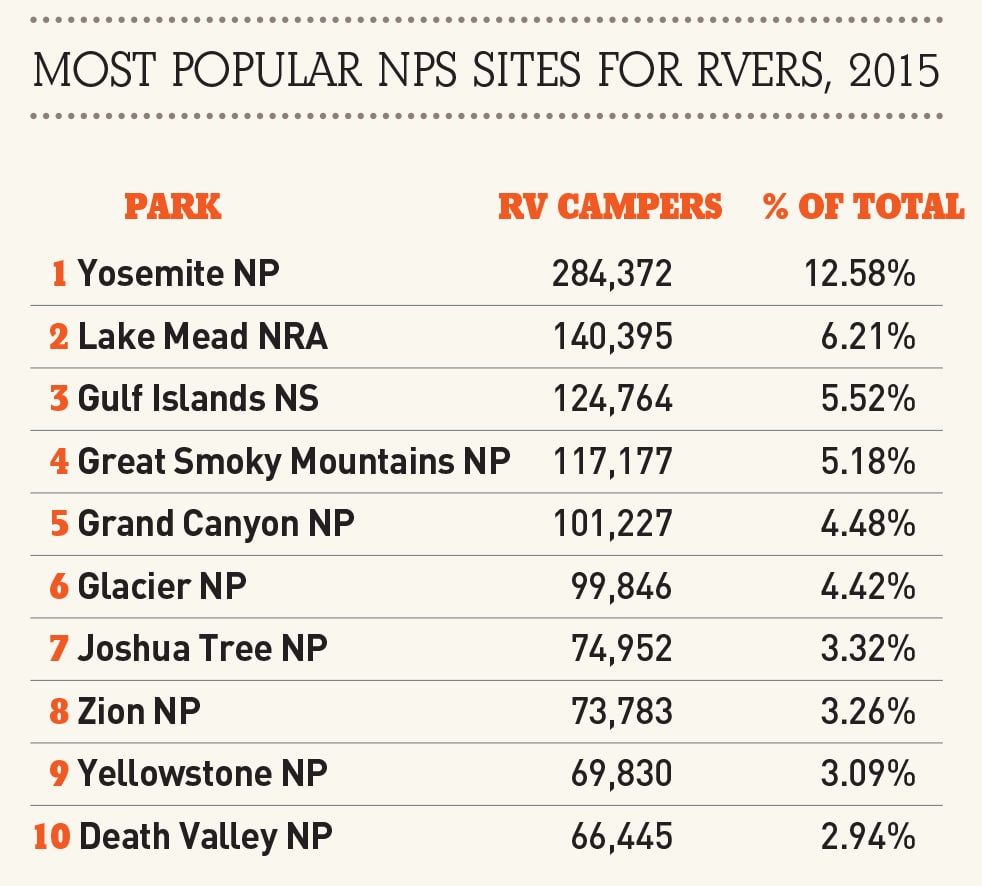57 things you always wondered about the National Park Service*
(*But didn’t know who to ask)
Everybody knows the National Park Service (NPS). And by now you should know MotorHome is celebrating the organization’s 100th birthday all year long with our Find Your  Adventure series. Now that the big day is almost here, we’re bringing you an assortment of fascinating facts designed to amaze, amuse and – of course – inspire you to go out and find your own adventure in America’s national parks.
Adventure series. Now that the big day is almost here, we’re bringing you an assortment of fascinating facts designed to amaze, amuse and – of course – inspire you to go out and find your own adventure in America’s national parks.
If you’re a reader of MotorHome magazine, chances are you’re a well-traveled person. And in those travels, you’ve also likely been to your fair share of national parks.
But what do you really know about the NPS and the properties it protects and preserves on our behalf? While you can probably tick off a handful of parks you’ve been to, we think you’ll be surprised to learn the depth and breadth of the agency’s holdings.

Sandboards made for the dry slopes in Great Sand Dunes National Park and Preserve are more effective than traditional snowboards.
To that end, we present 57 of the most extraordinary “points of interest” from the first 100 years of the NPS.
Happy Birthday!
Mark your calendars for August 25, the Park Service’s 100th birthday. Formed when President Woodrow Wilson signed the Organic Act of 1916, the legislation transferred management of 35 national parks and monuments to the new agency. Today, the NPS rides herd on more than 400 areas, with new ones being added all the time.
Remarkable Rocks
While there are picturesque rock formations in many national parks, the 2,000-plus sandstone arches that give southern Utah’s Arches National Park its name are quite possibly the most extraordinary natural features you’ll find anywhere.

At Utah’s Capitol Reef National Park, visitors can pick a variety of delicious treats from the park’s 3,000 fruit trees.
Sweet Treats
Time your visit to Utah’s Capitol Reef National Park right – from midsummer to early fall – and you can pluck heirloom varieties of apples, peaches, cherries and more, fresh from the park’s 3,000 fruit trees, a remnant of the now-vanished 19th-century community appropriately named Fruita.
In the Dark
Places that have been declared International Dark Sky Parks – like Texas’ Big Bend National Park, Utah’s Natural Bridges National Monument and California’s Death Valley National Park – still have lots to see after the sun goes down. Namely, more stars in the sky than you even knew existed, including the cloudlike swash across the eastern sky, otherwise known as our own Milky Way galaxy, rising above you.
Hot Enough For You?
With a record ambient air temperature of 134 degrees Fahrenheit, you might think California’s Death Valley National Park takes the prize for hottest place in the NPS. Then you remember that the water bubbling up out of the ground at Arkansas’ Hot Springs National Park comes out at a steamy 143 degrees Fahrenheit. Which is right about the time you realize that the lava being spewed out by Hawai’i Volcanoes National Park’s Kilauea and Mauna Loa emerges at somewhere in the neighborhood of 2,100 degrees Fahrenheit.

Biscayne National Park is just minutes from downtown Miami and features four distinct ecosystems: mangrove, bay, island and coral reef.
Get Wet
When we picture national parks we naturally picture dry land – mountains, valleys and forests. That said, there are more than a few NPS properties that are literally all wet. Foremost among them is south Florida’s Biscayne National Park, which is said to be 95 percent water.
Get Weird
For our money, the quirkiest sights you’ll ever see in a national park are the rocks that appear to have moved under their own power on the barren surface of Death Valley National Park’s The Racetrack playa. Runner-up: Wyoming’s Devils Tower National Monument gets the nod, for both its unnaturally conical shape and its role as the landing site for the aliens in the sci-fi flick “Close Encounters of the Third Kind.”
 Get Wild
Get Wild
For most people, the chance to view animals up close is the highlight of a visit to America’s national parks. Here are four parks guaranteed to provide plenty of watchable wildlife:
- Katmai – Every July and September, some of the largest bears in the world (the park has more than 2,000 grizzlies) converge to feed on spawning sockeye salmon in Alaska’s Brooks River. Not to mention the beluga, gray and killer whales cruising by on the coast.
- Yellowstone – These 2.2 million acres in northwestern Wyoming are home to 67 mammal species, including megafauna like bison, elk, grizzly and black bears and bighorn sheep. If you’re extra lucky, you might even catch a glimpse of the park’s recently reintroduced wolf packs.
- Glacier – While this park on the Canadian border in Montana is best known for attractions like the always enthralling Going-to-the-Sun Road, its million-plus acres are also home to a large population of grizzlies, plus mountain goats, black bears, mountain lions, moose and more.
- Denali – Besides its namesake mountain, caribou, moose, Dall sheep, wolves, and grizzly bears are all prime attractions at this 6 million-acre Alaskan park. The best part is that it’s not unreasonable to expect to see all of the above in a single day.
Strategies for Busy Parks
Arrive early (or stay late) to avoid the crowds.
Skip lines by making use of automated kiosks (where available) to pay park admission.
At the Extremes
The largest of the Park Service’s charges is Alaska’s Wrangell-St. Elias National Park and Preserve, which could swallow Death Valley, Yellowstone and the Everglades and still have room left over.
At 0.02 of an acre, Philadelphia’s Thaddeus Kosciuszko National Memorial (named for a hero of the American Revolutionary War) is the smallest unit of the NPS.
Denali National Park and Preserve wins the prize for highest spot in the NPS with its 20,310-foot namesake peak, which also happens to be the tallest mountain in North America.
You’ll find the lowest spot under the Park Service’s dominion in Death Valley National Park, where Badwater Basin lies 282 feet below sea level.
Most Adventurous Parks
Everyone knows national parks are full of adventures, but here are four parks that really kick the adventure quotient up a notch:
- Great Sand Dunes National Park and Preserve, Colorado
Lots of people snowboard on snow, but how many have tried sandboarding from the top of some of America’s tallest dunes?
- Wright Brothers National Memorial, North Carolina
Take a leap of faith while learning to hang glide on the same Kitty Hawk dunes Orville and Wilbur used to launch their flying machines.
- Grand Canyon National Park, Arizona
Floating all or part of the 277 miles of the Colorado River that flow through the mile-deep canyon is sort of the definition of “trip of a lifetime.”
- Mammoth Cave National Park, Kentucky
The Wild Cave Tour here takes you – via climbing and crawling – to parts of the world’s longest cave system the general public will never see.
Parks Everyone Should Visit
Got a bucket list? Make sure these parks are on it.
 1) Grand Canyon: Granted, it is just a big hole in the ground. That said, this mile-deep canyon in Arizona is guaranteed to be the most magnificent rift in the earth’s crust you’ll ever see.
1) Grand Canyon: Granted, it is just a big hole in the ground. That said, this mile-deep canyon in Arizona is guaranteed to be the most magnificent rift in the earth’s crust you’ll ever see.
 2) Yellowstone: Brilliantly colored thermal pools, bubbling mud pots, sky-high geysers and more make this Wyoming, Montana and Idaho park nestled in the caldera of an ancient volcano fascinating.
2) Yellowstone: Brilliantly colored thermal pools, bubbling mud pots, sky-high geysers and more make this Wyoming, Montana and Idaho park nestled in the caldera of an ancient volcano fascinating.
 3) Yosemite: With its plummeting waterfalls and distinctive rock faces like the climbing mecca of El Capitan, the California valley that John Muir fought to preserve is still breathtaking.
3) Yosemite: With its plummeting waterfalls and distinctive rock faces like the climbing mecca of El Capitan, the California valley that John Muir fought to preserve is still breathtaking.
 4) Acadia: This Maine gem starts with a stunningly beautiful rocky coastline, then adds 45 miles of historic carriage roads and Cadillac Mountain, the tallest peak on the U.S. Atlantic coast.
4) Acadia: This Maine gem starts with a stunningly beautiful rocky coastline, then adds 45 miles of historic carriage roads and Cadillac Mountain, the tallest peak on the U.S. Atlantic coast.
6 LANDMARKS

National parks and monuments are home to some of America’s most famous landmarks. How many of these can you name? Extra points if you can also name the park they’re found in. ANSWERS: 1. Half Dome/Yosemite NP; 2. Giant Sequoia/Sequoia NP; 3. Delicate Arch/Arches NP; 4. Old Faithful/Yellowstone NP; 5. Saguaro cactus, Saguaro NP; 6. Badlands/Badlands NP.




